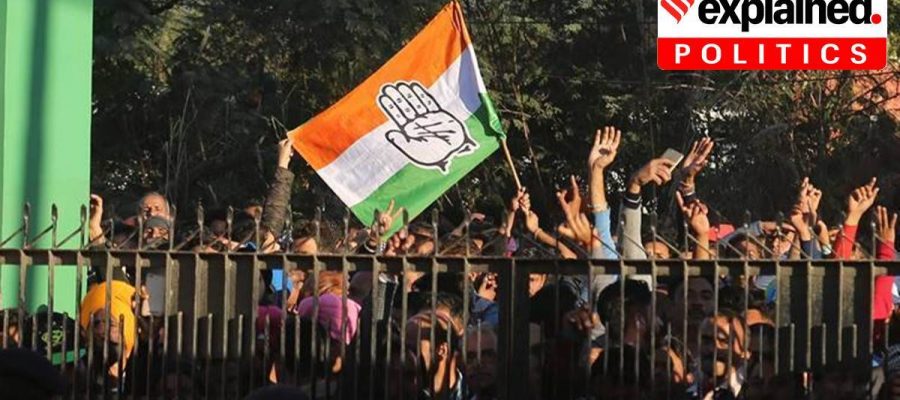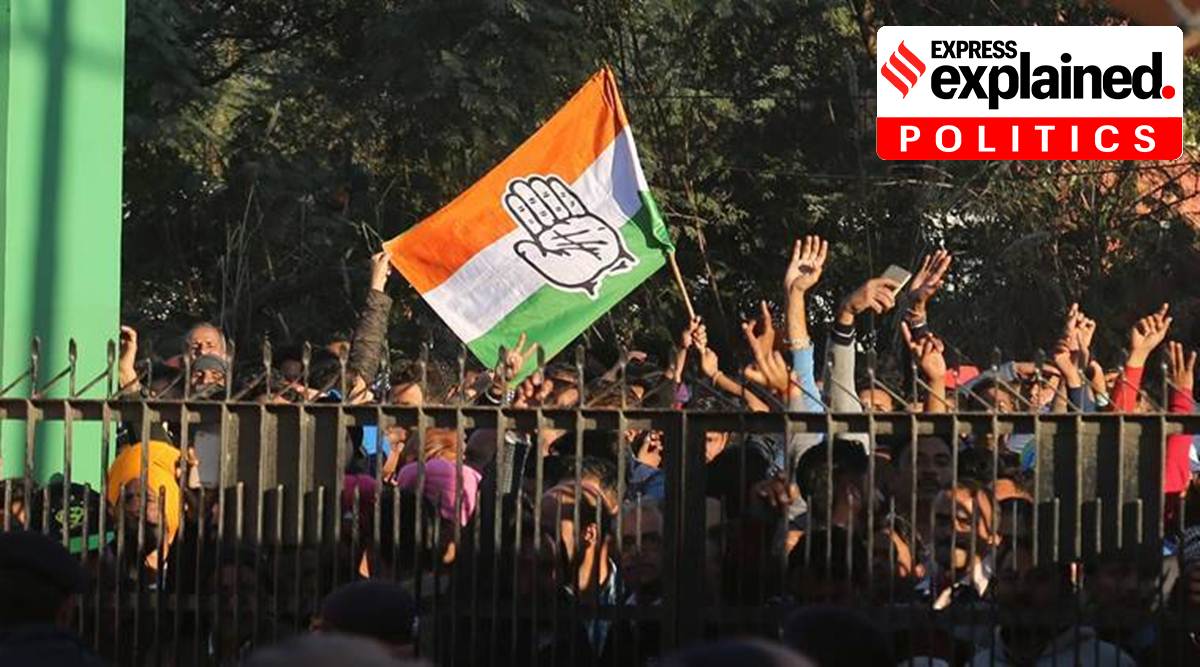The Congress has suffered countless splits and desertions since Independence. Many leaders have left, mainly due to factional differences, and floated their own outfits.
The Puducherry government has fallen, leaving the Congress without a government in South India after many decades.
The opposition alliance is led by the All India N R Congress, a regional party formed by the former Chief Minister of Puducherry, N Rangasamy, before the Assembly elections of 2011. Rangaswamy had been unhappy with the Congress ever since he was removed as CM in 2008. His party made an impressive debut in the 2011 elections, winning 15 out of 30 seats, and forming the government with the AIADMK, which won 5 seats.
The Congress has suffered countless splits and desertions since Independence. Many leaders have left, mainly due to factional differences, and floated their own outfits.
Some like Mamata Banerjee, Sharad Pawar and Y S Jagan Mohan Reddy succeeded, while many like K Karunakaran, Ajit Jogi, and G K Moopanar fell by the wayside after some years. Some prominent examples of Congress offshoots that became powerful regional political forces:
N R Congress
The Congress has been out of power in Tamil Nadu since 1967, but has flourished in neighbouring Puducherry. It has not been able to contain factionalism, however.
In 2008, Rangasamy — who was opposed by his entire cabinet as well as some influential leaders in Delhi — was replaced by V Vaithilingam, who had been Chief Minister from 1991 to 1996.
Supporters of the two factions attacked each other and public transport. In February 2011, Rangasamy floated his party, which was propelled to power by its leader’s impeccable image. The Congress was reduced to 7 seats in the elections of May 2011. This situation was reversed in 2016, when the Congress won 15 seats, and the N R Congress 8.
YSR Congress
In the first three decades of the republic, the Congress was undefeated in Andhra Pradesh. N T Rama Rao, the Telugu film actor-turned-politician changed this — capturing power within a year of forming the Telugu Desam Party in 1982.
The Congress bounced back in 1989, but lost again in 1994. The party returned to power after 10 years in 2004, led by the charismatic Y S Rajasekhara Reddy.
? JOIN NOW ?: The Express Explained Telegram Channel
YSR’s death in a helicopter crash in September 2009 brought his son Jagan into the spotlight. YSR’s supporters wanted him to be made Chief Minister, but the central leadership chose 79-year-old veteran K Rosaiah as acting CM, and remained cold to Jagan’s request to take out a condolence tour — Odarpu Yatra — of the state. In November, the Congress high command decided, in the face of immense pressure from YSR’s associates and MLAs, to continue with Rosaiah. Jagan soon embarked on his yatra.
A year later, in November 2010, Jagan resigned from the Congress through an open letter to Sonia Gandhi, and soon afterward announced he would launch his own party. The YSR Congress Party (YSRCP) was floated in March 2011. In the elections of 2019, Jagan stormed to power.
Trinamool Congress
Mamata Banerjee’s is the biggest success story of the various Congress offshoots. The fiery mass leader of the Congress had famously defeated Marxist heavyweight Somnath Chatterjee in 1984. She broke away from the Congress in 1997, and on January 1, 1998, turned her Trinamool Congress into a separate political party.
Mamata’s exit from the Congress was not just due to the all-too-familiar factionalism in the state unit; she also resented the Congress central leadership’s — the party was then led by Sitaram Kesri — soft approach to the Left parties in Bengal.
Mamata saw the Left as her number one enemy, and believed she could join hands with the BJP to defeat them. She found success in 2011 — the Trinamool Congress won a historic election, ending the Left’s 34-year rule in Bengal. In the process, Mamata also decimated her own once-parent party — the Congress is an also-ran in Bengal now.
Today, the wheel has come full circle. A decade after coming to power and 23 years after she formed the TMC, Mamata has her back to the wall, fighting to keep the BJP from coming to power.
Nationalist Congress
One of the first high profile exits from the Congress after Sonia Gandhi took over as party president was that of Sharad Pawar. Raising the banner of revolt on the issue of Sonia’s foreign origin, Pawar, along with Tariq Anwar and P A Sangma, floated the Nationalist Congress Party in 1999.
But the two parties co-existed in Maharashtra. Pawar was part of the UPA, and the Congress and NCP ran a coalition government in the state for 10 years from 2004 to 2014. Sangma subsequently broke from the NCP, and Anwar returned to the Congress. Pawar remains one of the tallest opposition figures in the country.
Not so successful
K Karunakaran, one of Kerala’s tallest leaders, left the Congress in 2004 and formed a new outfit but had no success. Ajit Jogi, former Chief Minister of Chhattisgarh who formed a party in 2016, also failed to make a significant impact. The Tamil Maanila Congress formed by Tamil Nadu Congress veteran G K Moopanar in 1996 wound up after his death in 2001. His son G K Vasan merged the party with the Congress in 2002, but left to resurrect the Tamil Maanila Congress again in 2014.
Source: Read Full Article




